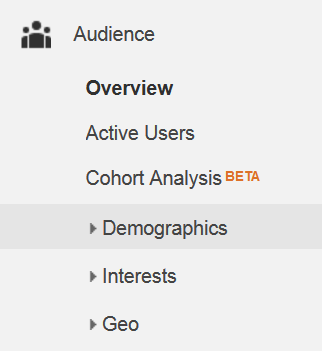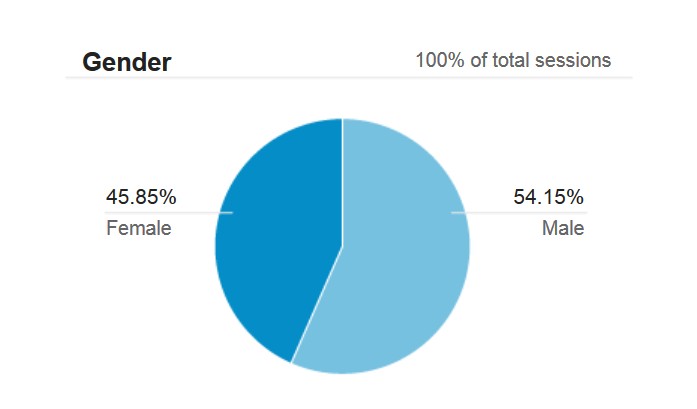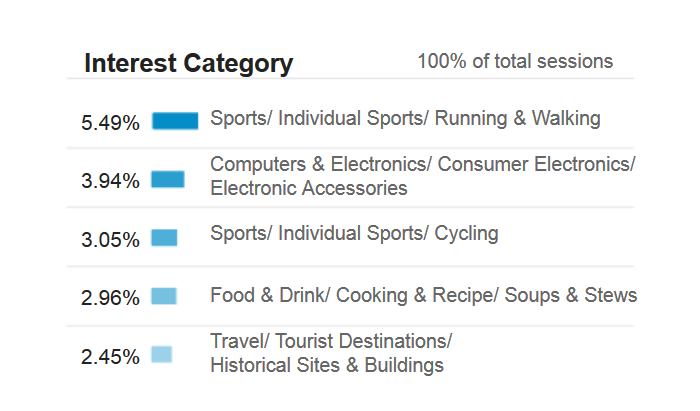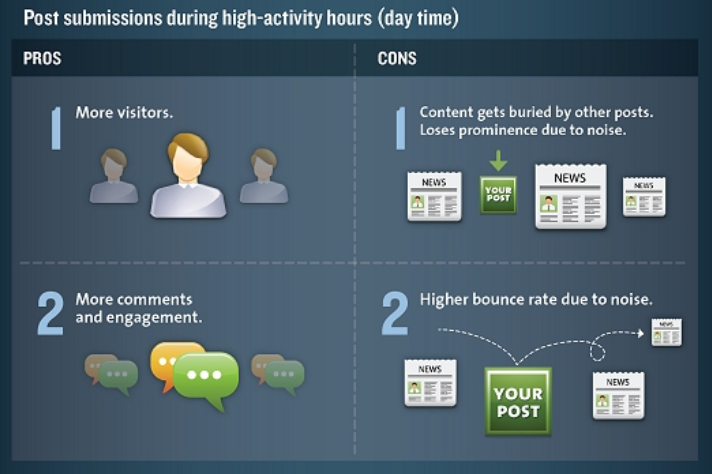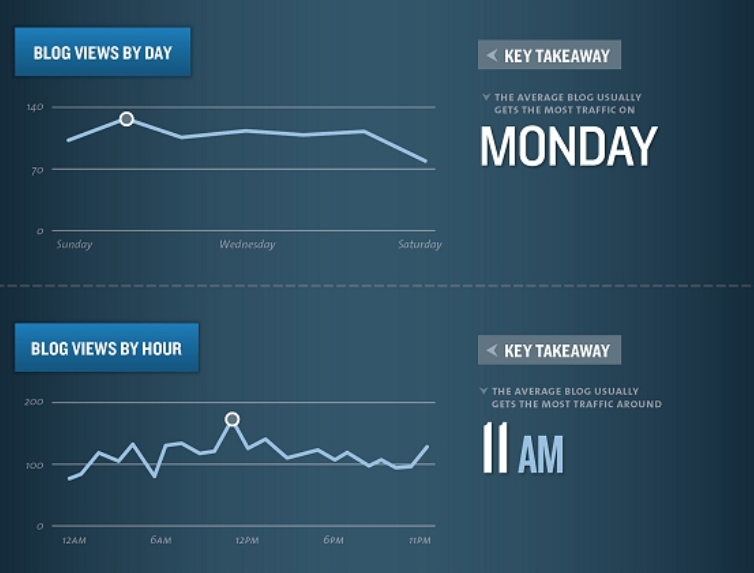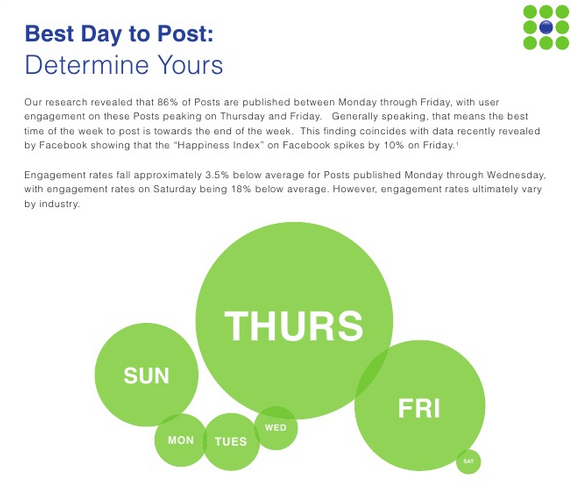Okay, so you’ve just written a stellar blog post.
You click ‘Publish’ on WordPress and wait for the hits to come pouring in…
Except they don’t.
What went wrong? Your blog post was great!
Blogging is an incredibly powerful online tool for driving interest in your business:
- Small businesses with a blog see a 126% increase in leads compared with businesses who don’t actively update their blog.
- Posting 20 blog articles a month has been shown to generate five times more traffic than posting only once a week.
In spite of this, many marketers struggle to get their blog posts in front of their target audience:
- 60% of B2B marketers say that their biggest challenge is creating engaging content that people want to read.
So what can be done?
How do you get the internet to stop and pay attention to your blog post?
Never fear – I’m going to run through a few of the key steps to getting your blog in front of as many eyeballs as possible.
Optimizing Your Content
Before you do anything to promote your blog post, you first need to make sure that the article itself is as appealing as possible.
The first and most important step to getting your blog seen by a wide audience is this:
If your blog post is full of typos, half-researched arguments, or if it’s just not an engaging read, it’s not going to draw the attention you’re hoping for.
To make sure your article has the highest possible quality:
- Pick an article that you think is a great example of the tone and style you’re looking for.
- Match your article to the style of this example, paying careful attention to its structure and the language the article uses.
- Get an outside source to proofread your finished article – it’s easy to make mistakes but difficult to spot them.
With so much content online, readers aren’t going to waste time with articles that don’t grab them, so the more you can make your blog post stand out through smart editing and a clear voice, the better.
Making it Relevant
One of the biggest mistakes a lot of content creators make is trying to appeal to everyone.
- In the internet age, people prefer niche content that matches their specific interests over vague articles written for laymen.
- With so many people online, you’re much better off appealing directly to your core market – chances are this audience is sizeable enough to help your content spread.
In order to pinpoint your target audience, you’ll probably have to do some research.
Fortunately, there are a variety of ways to conduct this research.
- If you’re an established blogger using Google Analytics, you can find a handy breakdown of your existing readership in this tool.
- The ‘Demographics’ tool lets you see the typical age and gender of your site visitors, as well as a vague breakdown of their interests.
- This can help you find out who is most interested in the content you’re already producing so that you can either cater directly to this group or start altering your content to appeal more to the kind of audience you really want to reach.
- You can also see which blog posts generate the most traffic, and work to create more articles on a similar topic or with a similar structure.
Of course, if you’re just starting out, you won’t have access to all this guidance.
In that case, you’ll want to:
- Decide on what the target audience for your blog is.
- Make a list of this audience’s needs and wants.
- Work to cater towards what your audience is hoping to see.
There’s a fair amount of trial and error involved in perfecting this, but in my opinion, the most important thing is:
- Going through a blog post and making sure that it stays on topic and has the appropriate appeal for the audience you’re wanting to connect to.
Adding Killer Visuals
No matter how well-written your blog post is, you need a hook to get people to want to read it.
And when it comes to hooks, images are among the best way to draw people in.
- When people are scrolling through pages of content on the internet, you need something to stop them in their tracks.
- Bold images can interrupt readers long enough to get their attention.
- They’ll also set the tone for the article and tease readers with the kind of content they can expect.
Images have been proven to be essential to content marketing:
- Articles with images receive 94% more views than articles without images.
- Color images increases the average user’s interest in reading an article by 80%.
- Facebook posts with images enjoy 2.3 times more engagement than purely text posts.
There are a few important keys to using images well:
- Bold colors and shapes grab attention best.
- It’s important to use the most unique images possible to make your article stand out – if you can create or commission custom graphics, all the better.
- Stock images have almost entirely lost their appeal. Nobody takes them seriously, and many internet users have begun to mentally block them out entirely.
While the main picture for your article will draw readers’ attentions, peppering the whole article with a variety of pictures makes sure that they’ll keep reading all the way through.
Choosing a Powerful Title
A good title, like a strong image, makes all the difference to getting people to click a link to your article.
- Compelling titles grab attention and make people want to know more.
- As an example, asking a question in a post’s title is 8% less effective than making a definitive statement.
It’s not always easy to determine which title will be the most effective, which is why many companies constantly A/B test their titles to find the most engaging, relevant labels for their content.
- The Huffington Post, for example, often A/B tests its titles to find the most powerful and compelling way to get readers to click their links.
Making Your Article Searchable
- Lots of pages and content means lots of words for search engines to find relevant in various searches.
- The better your blog ranks in search results, the more readers will be brought to it when searching for similar topics online.
That said, there are a few key steps to getting your blog noticed by search engines.
These little things are easy to overlook, but they can bring a lot of attention to your site when you do them right:
- Fill your article with relevant keywords to help search engines identify your articles’ topics.
- Give readable names and ALT text to images which tell a search engine what the pictures show.
- Create a snappy, focused meta description to let search engines know which search terms are the most relevant for your article.
Proper search engine optimization means that it’s easier for readers to find your articles through searches.
It’ll also help your articles to receive more traffic over a longer period of time – not just during their initial ‘new’ period.
Succeeding at Social Media
If you want to increase the number of readers your blog reaches, nothing’s going to help you quite like social media.
Through social networks:
- Your articles can travel further as people share them.
- You’ll be able to build a following to increase your readership for future articles.
- You can get your articles seen by relevant communities.
Unfortunately, while there are plenty of benefits to social media, there’s also a lot of competition for people’s attention.
- With so much to look at, readers will need every possible encouragement to actually stop and look at your articles long enough to engage with them.
- When starting from scratch it can be difficult to make your first social connections.
- The good news is, once things start to pick up steam, your readers will do a lot of publicizing for you as they share content with their friends.
There are plenty of different small tricks to getting your work seen online.
To get a good readership through social media, you need to be:
- Vocal
- Interesting
- Relevant
- Consistent
Here are some of my favorite ways to draw attention online:
Posting at the Right Time of Day
While there are huge audiences online at all times of day and night, there are certain peak times that you need to be aware of.
- Posting content online at the right time can maximize the number of people who see it
- Of course, it’ll also mean that there’s more competition for readers’ attention, so strong titles and eye-catching visuals are more important than ever.
There are certain times when blog readers are more likely to be looking for something to read:
- Nearly 80% of internet users read blogs in the morning, compared with less than 40% at night.
- The average blog gets the most traffic at 11am on Monday morning.
Beyond this, there are also times of the day that are more effective for posting on social media:
- Facebook engagement rates are 18% higher on Thursdays and Fridays.
- Twitter use is higher during the early afternoon, Monday to Friday.
Posting content at appropriate times means more people will be seeing it, but what about the people who aren’t online at the right times?
- And what about people who don’t spot your article because of all the other stuff that’s being posted at the same time?
Remember, your audience (and their online activities) may be different than another company’s audience, so the statistics above may not be 100% relevant to your needs.
For this reason, it’s important to check your own analytics to determine when and how to best engage readers.
It’s also important to give readers plenty of time to see your social media posts, and that means posting individual content pieces multiple times.
Staggering Your Postings
A single social media post is only going to be seen by a fraction of your audience:
- The average tweet has been seen by 50% of its total audience within just 24 minutes after posting.
- This means that if your followers aren’t actively looking for your latest tweet, it’ll pass them by.
To make sure as many people see your article as possible, it’s useful to post about it several times over the course of the day.
- Multiple posts mean people are more likely to catch it on social media at the right time.
- It also reminds people to read it, if they saw your original post but it wasn’t a convenient time to read your article.
- It’ll also give people more opportunities to share your posts, reaching a wider audience.
But posts don’t just need to be for your most recent articles.
- Linking regularly to older articles brings variety to your social media posts.
- It also gives people who might have missed an article the first time another opportunity to read it.
Of course, it’s important not to overdo things.
If you post too frequently about the same topic, you’re going to annoy followers, and they’ll be less likely to engage with your posts at all.
- As a rule, it’s better to be a little overenthusiastic about posting than to miss opportunities to draw people to your blog.
- Just remember the same quality rule for your social media posts as is relevant for your blog articles.
- Make sure your social media feed is actually interesting and worthwhile for your followers, or they might ditch you.
Joining the Community
No matter what your article’s subject matter, there’s a good chance the internet is already discussing it.
- The trick to getting your article read, then, is to reach out to the right people online.
The first step to doing so is researching the communities that are interested in your article.
You should already have a relatively good idea about who wants to read your blog from the research I talked about earlier, but now’s the time to find out where these people hang out online.
You want to know:
- What websites these people visit frequently.
- What hashtags they’re using to discuss the topic of your article.
- Who are the key influencers on this subject.
- Which other websites are talking about the topic.
- Which social media groups and communities are most interested in this subject matter.
A lot of the time, finding this out is pretty simple: just start searching social media for terms related to your subject and see what you can find.
- The keywords you chose for your article are a good place to start. If you think they’re relevant, other people probably do too.
- One of the best ways to research relevant communities is to watch what your competitors are doing, because they’ll probably already trying to engage with these groups.
- If all else fails, ask people online – getting involved with the community is necessary to promote your article, and asking beginner’s questions is a great way to introduce yourself.
Connecting with People
The internet is a network.
If you want to reach the widest possible audience, it’s important to remember that you don’t have to build a following all by yourself.
- Sometimes it helps to get a little push from the most popular people online.
Influencer marketing is a fantastic way to draw people to your blog.
If your content is of a high quality, it’s easy to get people talking about your blog, and they’ll be grateful for the opportunity to do so.
During your research into the community surrounding your topic, you’ll likely have found the people, websites and communities that are more popular than others – the ones that tell everyone else where to look for great content.
Once you’ve found them, it doesn’t take much effort to reach out and tell them about your latest blog post.
To make use of influencer marketing, you can:
- Tag influencers in social media posts, asking for their comments and feedback.
- Post in groups who discuss your topic, asking for their advice and a discussion of your work.
- Contact people who share content similar to yours, asking them to share your blog post.
Note that, in these articles, you’re asking people their opinions on your work.
- This is because you want to build a discussion around your content.
- An active community debate will help your work to travel further.
- It also makes you seem like less of an attention-seeker who’s wading into a community to spam your personal message.
Throughout these discussions, it pays to be polite, engaged and interested in other people’s opinions.
- You want to be seen as an authority on the subject you’re blogging on, and that means taking advice from others and seeing their perspective.
- This will also give you ideas on how you can improve your future blog posts to draw in a wider audience.
Don’t be afraid to say something controversial as long as you’re polite about it: a debate about your argument will help the discussion to stay lively and fun.
Above all though, be courteous, friendly and respectful. You won’t get anywhere by trolling your would-be readers (or your would-be influencer partners).
Setting Up Collaborations
There’s another great way to use influencer marketing to draw crowds to your blog, and it might end up improving your content quality as well.
Instead of working on your own, involve key online influencers and other creators in your articles.
To get started, ask for a quote from influencers to include in your article.
- This adds star power to your article, making your content more authoritative and interesting to read.
- It also means the influencer will be more invested in sharing your blog post with their following, helping it to travel further and reaching more readers.
You can also get involved in collaborations with other bloggers who are working on similar articles:
- This works well when you work with someone who has contrasting skills.
- For example, if you’ve got good facts and research but another blogger has a great image creation technique, you can work together to produce an infographic.
- Collaboration blog posts help you to build a stronger network for your blog, and you benefit from your partner’s audience as well as your own, sharing like-minded readers to increase traffic for both of you.
The internet’s greatest strength is the network of people who are all able to share their views and opinions.
Getting involved with these communities and establishing your blog as a source of trusted information is one of the best ways not just to grow your audience, but to make sure that the right people are reading your blog.
If All Else Fails: Paid Ads
I don’t like to recommend paid ads for most blogs.
- An increasingly small number of internet users even notice them, let alone engage with them.
- Just as an FYI, the average click-through-rate of a paid banner ad is only 0.06%.
If you’ve tried all the other tips on this list and you still want to boost your readership, though, you might consider paid ads.
- They’re an easy way to get hits that don’t require you to do anything.
- As such, they might be useful if you don’t have a lot of time to devote to more organic promotion (or if your organic promotion efforts have exhausted their potential.
That said, if you’re going to use paid ads, I’d recommend social media sponsored posts:
- You can directly target your potential audience through Facebook and Twitter promotions.
- Happy readers will also share your articles, giving you a bit of an additional visibility boost.
If you’re smart in the way you design your paid ads, they can definitely be worthwhile.
Just bear in mind that your images, titles and blog content are no less important if you’re paying for promotion online.
So, there you have it – a collection of ways to get your blog posts in front of as many readers as possible.
These tips will work no matter the size of your blogging campaign or your company’s brand.
Just be sure to:
- Produce high quality, eye-catching content.
- Engage with communities online.
- Give readers plenty of opportunities to know about your article.
If you do these things, you’ll find your readership growing in no time.
Got another suggestion for attracting attention to online articles? Share your best tips by leaving a comment below:
Images:
Flickr, Pixabay, Flickr, Flickr, Flickr, Flickr, Flickr, Content Marketing Institute, Kissmetric, Kissmetric, Kissmetric, Buffer, Hubspot, Wiselytics, Flickr, Flickr, Pixabay, Flickr, Flickr






